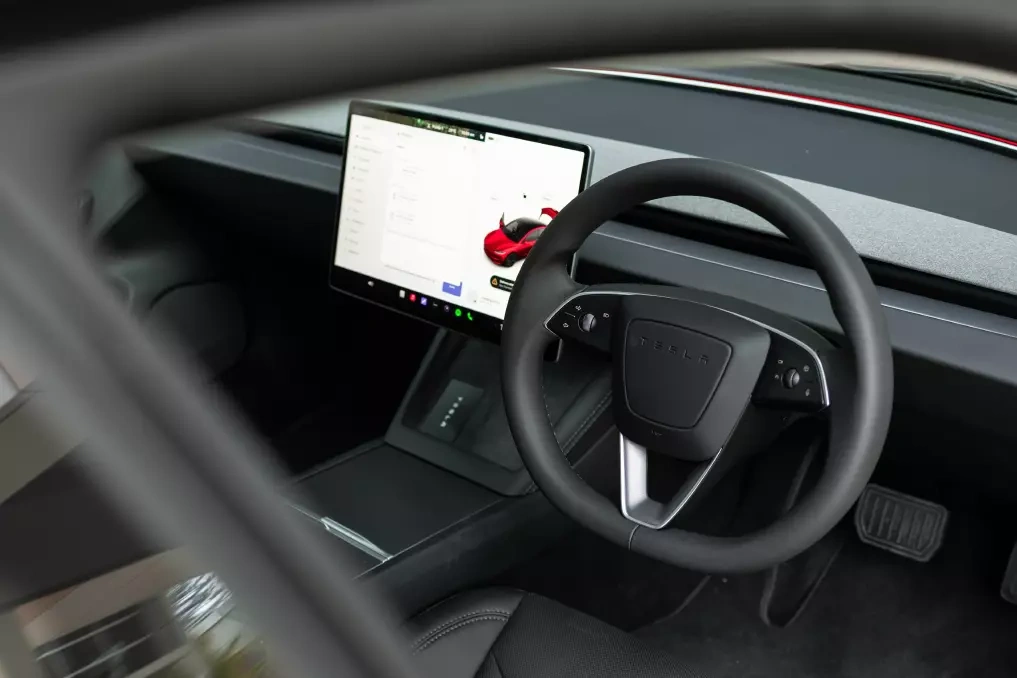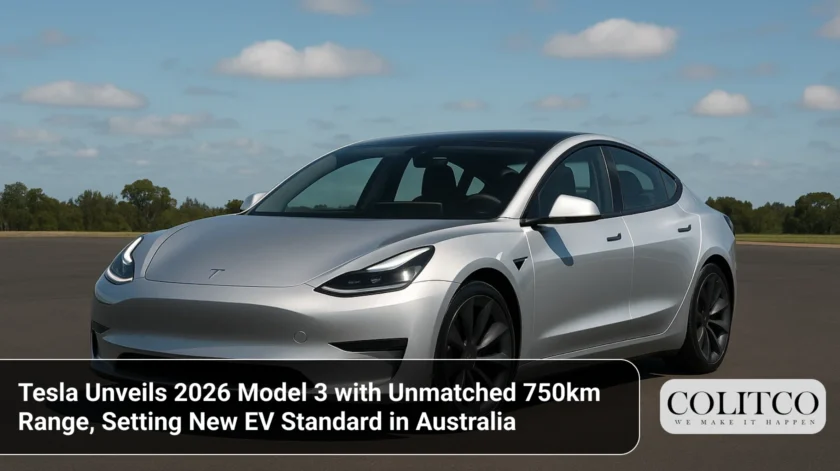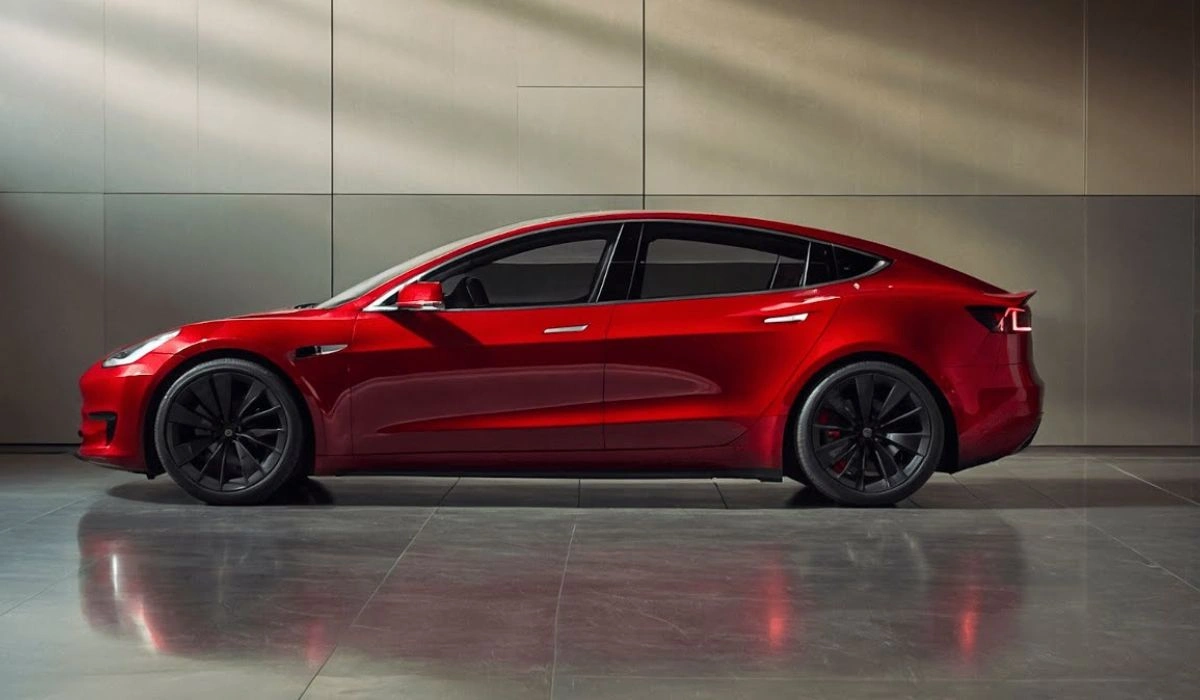Tesla Breaks Range Record
Tesla has introduced the 2026 Model 3 Long Range Rear-Wheel Drive variant in Australia. The new model delivers 750 kilometres of WLTP range on a single charge, surpassing every other electric vehicle available locally. Priced from $61,990 before on-road costs, this variant sits between the entry-level RWD at $54,900 and the discontinued Long Range AWD at $64,900.
Battery Upgrade and Performance
Tesla fitted the new Model 3 Long Range RWD with an 84 kWh lithium-nickel-manganese-cobalt battery pack sourced from LG Energy Solution. This battery increases range by 230 kilometres compared to the entry-level RWD variant. The powertrain features a 225 kW rear electric motor, enabling a 0–100 km/h sprint in 5.2 seconds and a top speed of 201 km/h.
The Model 3 Performance variant also receives a battery upgrade for 2026. Its WLTP range rises to 571 kilometres from 528 kilometres, while power output remains 343 kW and 0–100 km/h time stays at 3.1 seconds. Tesla retains the $80,990 price for this model before on-road costs.
Market Impact and Competition
With 750 kilometres of range, the 2026 Tesla Model 3 Long Range RWD outperforms the Polestar 3 Long Range Single Motor’s 706 kilometres on 20-inch wheels by 44 kilometres. It also exceeds the BYD Seal Premium and Polestar 2 variants in range. The Tesla Model Y Long Range AWD currently offers up to 600 kilometres, making the new Model 3 the clear range leader across all Tesla and rival lineups.
Standard 18-inch Photon wheels deliver the maximum 750 kilometres of range. Upgrading to 19-inch Nova wheels reduces range to 691 kilometres but maintains class-leading performance. Tesla applies black badging across all Model 3 variants for the 2026 update.
Charging Network Expansion
Tesla’s Supercharger network in Australia and New Zealand now exceeds 1,000 charging stalls at 163 locations. The company recently opened its largest Supercharger site in the Southern Hemisphere at Goulburn, NSW, featuring 20 V4 stalls. Superchargers can deliver up to 311 kilometres of range in 15 minutes for the new Long Range RWD model.
Design and Features
The 2026 Model 3 range gains new colour options including Diamond Black, Deep Blue, Stealth Grey, Quicksilver and Ultra Red, while retaining Pearl White as the standard finish. Interior configurations include standard black upholstery or an available white upholstery package. Tesla preserves the 15.4-inch centre touchscreen and 8.0-inch rear display across all variants.
Tesla maintains its minimalist cabin layout and over-the-air software updates for feature enhancements and performance optimisations. The MY26 Model 3 range now features wireless smartphone charging and a heat pump system for improved cold-weather efficiency.
 Tesla preserves the 15.4-inch centre touchscreen and 8.0-inch rear display across all variants
Tesla preserves the 15.4-inch centre touchscreen and 8.0-inch rear display across all variants
Sales and Adoption Trends
Tesla opened orders for the 2026 Model 3 variants on 3 October, with customer deliveries starting in November 2025. Test drives commence in late October at Tesla showrooms nationwide.
In the first half of 2025, the Model 3 ranked as Australia’s third best-selling EV, trailing the Tesla Model Y and the BYD Sealion 7. The Model Y sold 10,431 units, more than double the Sealion 7’s 3,756 sales. The BYD mid-size SUV launched in February 2025 and claimed second place ahead of the Model 3.
Tesla’s willingness to apply massive discounts of up to $11,000 on pre-facelift Model Y vehicles drove a 74.7 per cent month-on-month sales increase in August and a 162 per cent spike in September. These strategies have solidified Tesla’s position as Australia’s top-selling EV brand.
Industry Context and Regulatory Support
Australia’s EV market grew by 75 per cent in 2025, with EVs accounting for 11 per cent of total new car sales. Government incentives such as reduced road taxes for EVs and investment in charging infrastructure fuelled market expansion. Several states now offer stamp-duty exemptions or rebates for electric vehicles, boosting consumer uptake.
Automotive industry analysts expect EV market share to exceed 20 per cent by 2026, driven by new model launches and stricter emissions regulations. The Australian Government aims for 50 per cent of new car sales to be electric or hybrid by 2030.
Also Read: The Australian Dollar vs US Dollar: What’s Driving Recent Volatility & Its Impact on Miners
Global Manufacturing and Technology Transfer
Tesla continues to source Australian-delivered Model 3 vehicles from Gigafactory Shanghai in China. The Long Range RWD variant debuted in China with an 830 kilometre CLTC range before adaptation to WLTP testing. Tesla engineers adapted battery algorithms and thermal management systems for Australian conditions, ensuring consistent real-world performance.
The new 78.4 kWh battery pack weighs 448 kilograms and features an energy density of 175 Wh/kg. Enhanced cooling circuits and optimised cell chemistry deliver sustained performance across diverse climates.
Future Outlook
Tesla’s introduction of the 2026 Model 3 Long Range RWD underscores its commitment to extending EV range benchmarks. Competitors such as BYD, Polestar and Mercedes-Benz plan to launch similar long-range models in 2026, intensifying the race for range leadership. Tesla’s global scale and vertical integration position it to maintain a technological edge.
The expanded Supercharger network and continued price adjustments suggest Tesla will drive further EV adoption in Australia. With state and federal incentives aligned to support electric mobility, Australia’s transition towards zero-emission transport will accelerate over the next five years.













